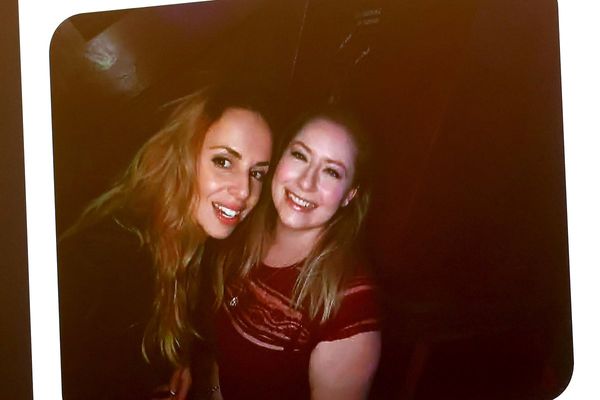ON a drizzly Tuesday evening in North West London, a basement wine bar glows like an amber dram under candlelight. Outside, commuters hurry past with damp coats and umbrellas, but down a short flight of stairs, laughter bounces around the low ceilings, punctuated by the clink of glasses. Bottles are opened, their labels admired. Small pours are measured into Glencairn glasses, swirled, nosed, sipped with curiosity. “It’s sweet!” someone exclaims in surprise. Another frowns, then laughs: “Oh, that’s smoky! Not what I expected at all.”
This is the Night Cap Club, a monthly whisky tasting founded in 2024 by Alina Lau – a 45-year-old NHS bereavement midwife by day, and by night, something closer to a whisky evangelist. The room is mostly female, a rarity in the traditionally male world of whisky.
Nobody looks as if they’ve wandered out of a gentlemen’s club; instead, the mood is more like a supper with friends: casual, welcoming, and above all, fun.
“I wanted to create an atmosphere where nobody feels intimidated,” Lau explains. “A place where you can try something new without being lectured at.”
‘Whisky? No thank you’
Lau's idea was born out of frustration. She wanted to share her love of whisky with her friends, most of whom were women. The response was not encouraging.
“They immediately said, ‘I don’t drink whisky, it’s rank, it’s disgusting, no thank you’,” she recalls. “They just ruled it out straight away. That got me upset, because the spectrum of whisky is enormous. It’s been around for centuries. There’s a whole world beyond that first harsh sip.
“I finally got one of my very, very good friends who was adamant she hated whisky. Every time I went to a pub and tried to get her to try something I was drinking, she didn’t like it, and that was my fault because I went for a Lagavulin, or Laphroaig. She’d say why am I drinking an ashtray? I don’t like this.

“I said to her, I will challenge you, because if you can drink wine, which some people can find very vinegary, very acidic, and have an appreciation for the whole spectrum of wine, you would definitely be able to develop your palate for whisky.”
Her solution was to meet people where they were: around the dinner table. Lau began hosting small supper clubs in her home, cooking dishes that would soften whisky’s perceived harshness and highlight its depth.
“If you have whisky on its own and you haven’t developed an appreciation for it, it can feel strong. Food softens the blow,” she says. Eventually, she collaborated with professional chef and whisky fan Tiffany Wong, hosting supper clubs in unusual locations such as local church Emmanuel.
Her friends were persuaded. One meal at a time, they turned from sceptics into enthusiasts. “Some of them are now hardcore fans,” she laughs. “They’re buying bottles, researching whisky, making cocktails at home. That’s when people told me: ‘You should open this up, sell a few tickets, build a community.’ And that’s how the monthly Night Cap Club, free of charge to attend, started. I wanted it to be accessible.”
A Childhood Palate
LAU’S own journey with whisky began early. Growing up in a household where her father enjoyed cognac and brandy, and her mother kept whisky on hand for Christmas desserts, she was never far from brown spirits.
“My dad actually started off drinking cognac and brandy,” she says. “My mum used to get whisky just for Christmas or around that time, maybe for cooking and desserts. And then I would be really cheeky, and sneak a little tickle. It never put me off. I always liked the taste of a brown spirit.”
There were hot toddies, too – whisky mixed with honey by her mother when she was unwell. Later, in her twenties, she discovered Japanese whiskies in London cocktail bars. “They felt cleaner,” she says. “That got me interested in the differences between styles.”
Her serious collection began when colleagues gifted her a bottle of Woodford Reserve bourbon as a leaving present. “From that moment, I thought I’ve got to invest a little bit more. Not just drink the cheap stuff.”
Today, her collection stands at about 70 bottles. “If you’re a collector, you probably have 100-plus,” she laughs. “But 70 feels like enough for me.”
From Kitchen Table To Community
THE leap from private supper clubs to public tastings happened quickly. What made Lau’s gatherings different was not just the whisky, but the company.
Her audiences are deliberately diverse – queer and trans friends, Asian and Black Londoners, neurodivergent guests, and newcomers who might never feel comfortable walking into a traditional whisky tasting alone.
“The door is open for them,” Lau says. “I’m democratising the space. Good whisky isn’t cheap, and not everyone can gamble £50 on a bottle they might not like. Here, they can try it for free, meet people, and learn in a safe, light-hearted way.”
The formula is simple: food, whisky, conversation. But behind it lies careful curation. Lau chooses bottles not just to showcase different regions and styles, but to surprise people with what whisky can do. “It’s interactive,” she explains. “You try, you taste, you talk. You create memories.”
One of her most talked-about pairings? Vegan cashew-based blue cheese with a smoky Scottish whisky. “It actually worked better than dairy blue cheese,” she says. “The nuttiness picked up the whisky’s wood flavours.”
Challenging The Old Guard
WHISKY has long been coded as masculine: think of adverts with rugged Highland hills, stern men in suits, slogans declaring whisky the drink of “real men”. In American TV dramas, women swigging Scotch is often shorthand for toughness.
Lau wants to dismantle those tropes. “To this day, I get asked: ‘Are you really into whisky?’ As if a woman couldn’t be,” she says.
But she is quick to point out that women have always been part of whisky’s story.
“Historically, women have always been involved,” she explains. “In the 18th century, it was women who ran the illicit stills. Helen Cumming at Cardhu literally hid excisemen in her house while she kept distilling. But over time, whisky became branded as this very male product. That’s what I want to disrupt.”
Change is happening. Across Scotland and beyond, women are now master blenders, distillery founders, whisky writers. Lau is part of that momentum – a grassroots effort to shift perceptions, dram by dram.
Behind The Playfulness, Serious Knowledge
PART of what makes Lau’s tastings work is the balance between playfulness and expertise. Guests may come for the food and laughter, but they leave with new knowledge.
Lau completed an online course with the Edinburgh Whisky Academy, and can talk mash bills, still shapes, and angel’s share with ease. She champions independents like Doghouse Distillery in London, whose bourbon-style whisky uses a high percentage of corn. She praises Compass Box, the London blending house that challenged her prejudices about blends.
“I used to steer away from blends,” she admits, “but Compass Box blew me away. Flaming Heart was smoky, toffee-rich, moreish. Hedonism tasted like crème brûlée — feminine, alluring.”
Her collection ranges widely: Irish Bushmills, Springbank from Campbeltown, Filey Bay from Yorkshire, experimental French and Mexican whiskies. She even keeps an “infinity bottle” – a vessel into which unfinished drams are poured and blended into one ever-evolving house spirit. “Sometimes I drink it, sometimes I use it for cooking or tinctures. Elderberry, nettle, chamomile – whisky makes a brilliant base.”
At home, she usually enjoys a dram before cooking dinner. “Even though I call my events the Night Cap Club, I find my senses are powering down before bed so I don’t drink then.”
The Art Of Pairing
FOOD remains the heart of Lau’s philosophy. Whisky, she argues, should be tasted like wine: alongside flavours that enhance or contrast.
Some pairings are classic – smoky whiskies with cured fish, sherried drams with blue cheese. Others are more playful. “Afternoon tea with whisky works beautifully,” she grins. Victoria sponge, olive-oil-based desserts, even crème brûlée have all featured.
But there are rules. “No harsh garlic or onion,” she warns. “A delicate Thai green curry can work, but whisky generally intensifies flavours. It’s about balance.”
The Road Ahead
SINCE launching, the Night Cap Club has grown quickly. Demand comes not just from curious Londoners but from the whisky industry itself. Brands have begun sending bottles and proposing collaborations.
Future tastings include Wolfburn, a far north Scottish whisky from Thurso, Lochlea headed by Jill Boyd and Sakhanri Distillery from Japan, founded by another woman Sabrina Sakhrani. Past tastings involved Irish whiskies Bushmills and Boann, plus a London bourbon style distillery Doghouse, led by another woman, Katherine Saunders.
Lau is already booked with events until next spring, and she is planning bigger ventures: half-conference, half-festival gatherings, and even DJ-led whisky-and-music nights.
But at its core, her ambition is simple. “My dream is that my daughter, who’s 26, can walk into a bar and confidently order a whisky the way she might a gin or wine,” she says. “No second-guessing, no stigma. Just enjoyment.”
For Lau, whisky is more than a drink. It is a tool for building community, confidence, and connection. “If you just have a homogenous group, what are you going to learn?” she asks. “Whisky is the excuse – the real point is connection.”
Back in the wine bar, the evening draws on. Bottles are nearly empty, plates scraped clean. New friendships are forming over shared discoveries: one dram earthy, another floral, another sweet with vanilla.
As the group begins to disperse, Alina Lau is still talking, laughing, answering questions. The atmosphere feels less like a formal tasting than a gathering around a kitchen table – exactly as she intended.
“I love playing,” she says, finally pausing with her own glass in hand. “This is my playground. If, by consequence, I disrupt the space and bring more people in, then I’ve done something right.”







